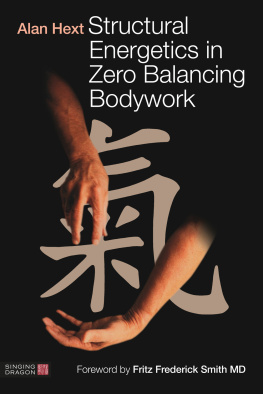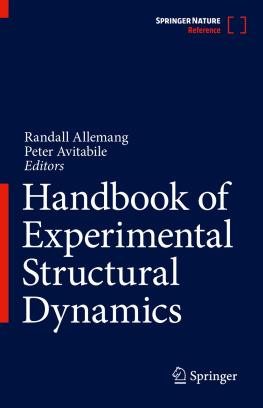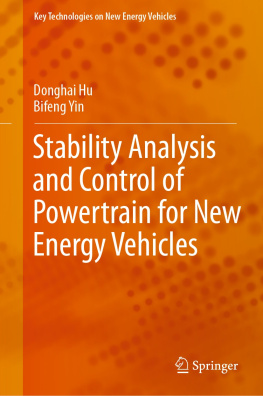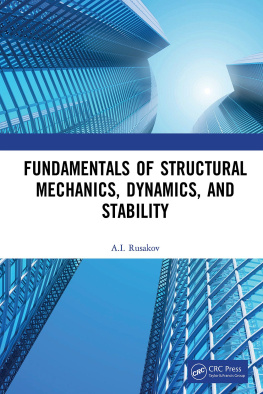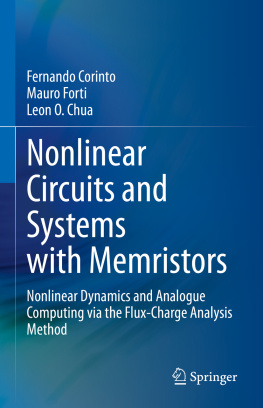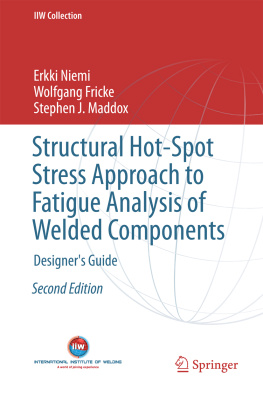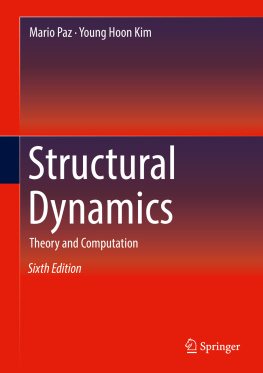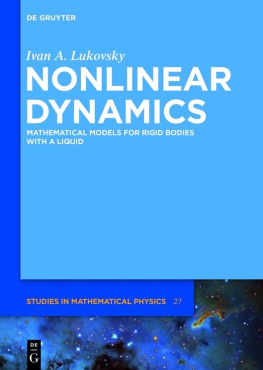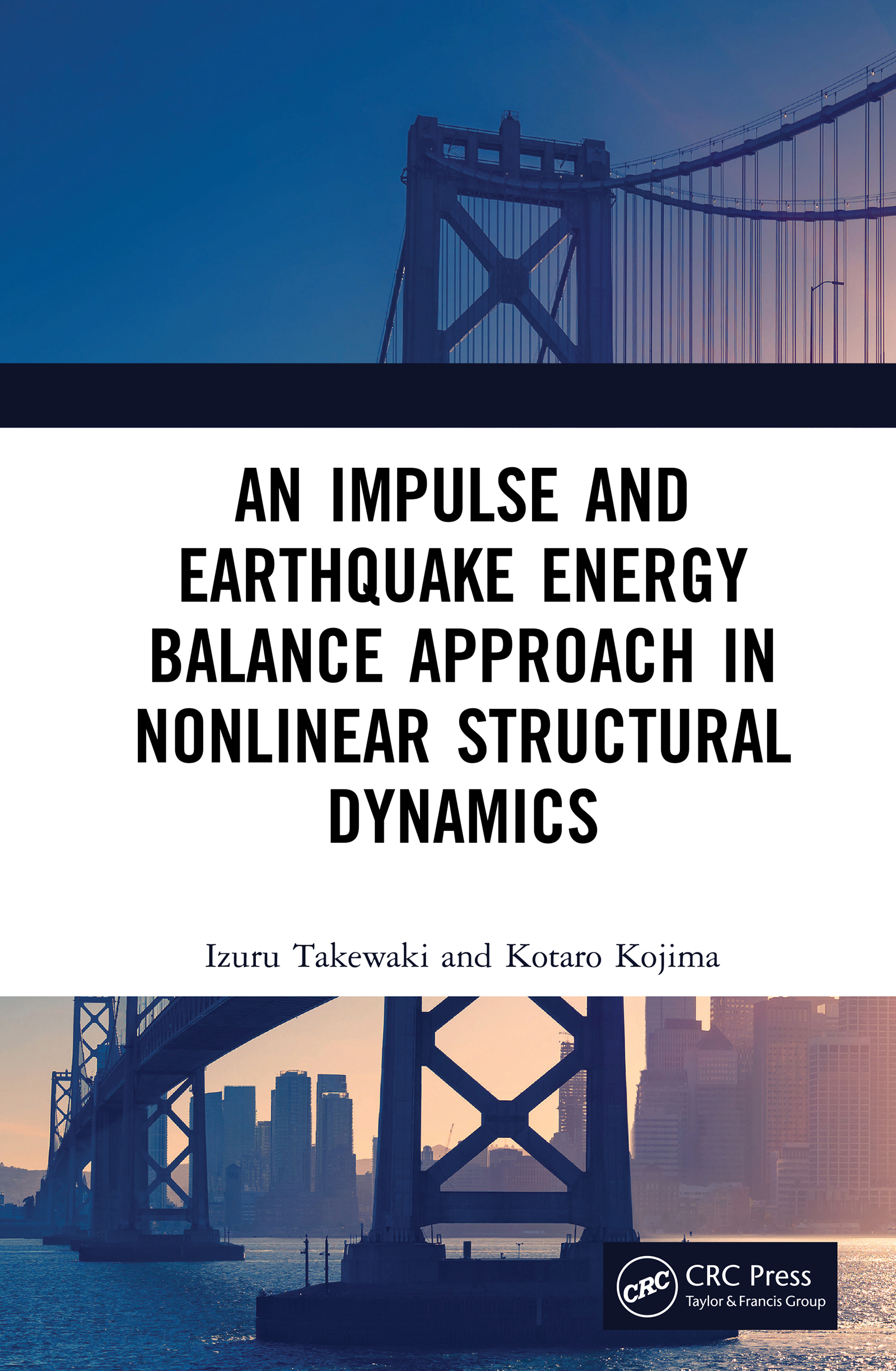
Table of Contents
Guide
Pages
An Impulse and Earthquake Energy
Balance Approach in Nonlinear
Structural Dynamics
First edition published 2021
by CRC Press
6000 Broken Sound Parkway NW, Suite 300, Boca Raton, FL 33487-2742
and by CRC Press
2 Park Square, Milton Park, Abingdon, Oxon, OX14 4RN
2021 Izuru Takewaki and Kotaro Kojima
CRC Press is an imprint of Taylor & Francis Group, LLC
The right of Izuru Takewaki and Kotaro Kojima to be identified as authors of this work has been asserted by them in accordance with sections 77 and 78 of the Copyright, Designs and Patents Act 1988.
Reasonable efforts have been made to publish reliable data and information, but the author and publisher cannot assume responsibility for the validity of all materials or the consequences of their use. The authors and publishers have attempted to trace the copyright holders of all material reproduced in this publication and apologize to copyright holders if permission to publish in this form has not been obtained. If any copyright material has not been acknowledged please write and let us know so we may rectify in any future reprint.
Except as permitted under U.S. Copyright Law, no part of this book may be reprinted, reproduced, transmitted, or utilized in any form by any electronic, mechanical, or other means, now known or hereafter invented, including photocopying, microfilming, and recording, or in any information storage or retrieval system, without written permission from the publishers.
For permission to photocopy or use material electronically from this work, access
Trademark notice: Product or corporate names may be trademarks or registered trademarks and are used only for identification and explanation without intent to infringe.
Library of Congress Cataloging-in-Publication Data
Names: Takewaki, Izuru, author. | Kojima, Kotaro, author.
Title: An impulse and earthquake energy balance approach in nonlinear structural dynamics / Izuru Takewaki, Kotaro Kojima.
Description: First edition. | Boca Raton, FL : CRC Press, 2021. | Includes bibliographical references and index.
Identifiers: LCCN 2021000740 (print) | LCCN 2021000741 (ebook) | ISBN 9780367681401 (hardcover) | ISBN 9780367681418 (paperback) | ISBN 9781003134435 (ebook)
Subjects: LCSH: Earthquake engineering. | Force and energy.
Classification: LCC TA654.6 .T3424 2021 (print) | LCC TA654.6 (ebook) | DDC 624.1/762--dc23
LC record available at https://lccn.loc.gov/2021000740
LC ebook record available at https://lccn.loc.gov/2021000741
ISBN: 978-0-367-68140-1 (hbk)
ISBN: 978-0-367-68141-8 (pbk)
ISBN: 978-1-003-13443-5 (ebk)
Typeset in Sabon
by SPi Global, India
On April 14 and 16, 2016, two consecutive large earthquakes occurred in Kumamoto, Japan. In most countries, it is a common understanding that building structures are designed to resist once to the ground motion from a large earthquake, e.g., one with the intensity level 7 (the highest level on the Japan Meteorological Agency scale; approximately XXII on the Mercalli scale), during its service life. However, in case of the Kumamoto earthquakes, a number of buildings were subjected to such large ground motions twice in a few days. This phenomenon was unpredictable, and the authors were convinced during and immediately after the earthquake that the critical excitation method is absolutely necessary for enhancing the earthquake resilience of building structures and engineering systems.
The senior author believed for a long time that near-fault ground motions have peculiar characteristics with a few simple waves (see ). The response to impulses can be described by the continuation of free vibration components, and this fact leads to the straightforward derivation of responses of even elastic-plastic structures.
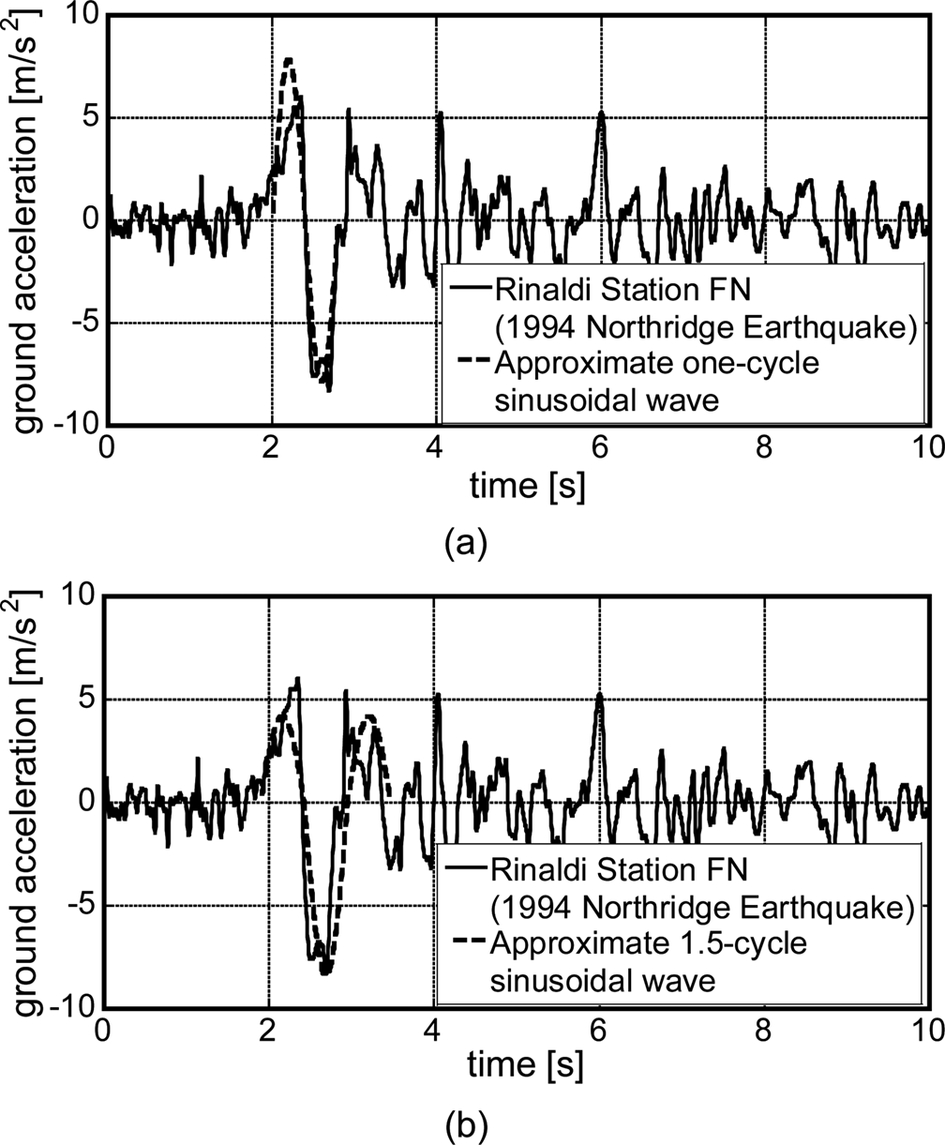
Figure 0.1 Simple modeling of Rinaldi Station fault-normal component (Northridge EQ. 1994) as representative of near-fault ground motion: (a) one-cycle sinusoidal wave modeling, (b) 1.5-cycle sinusoidal wave modeling.
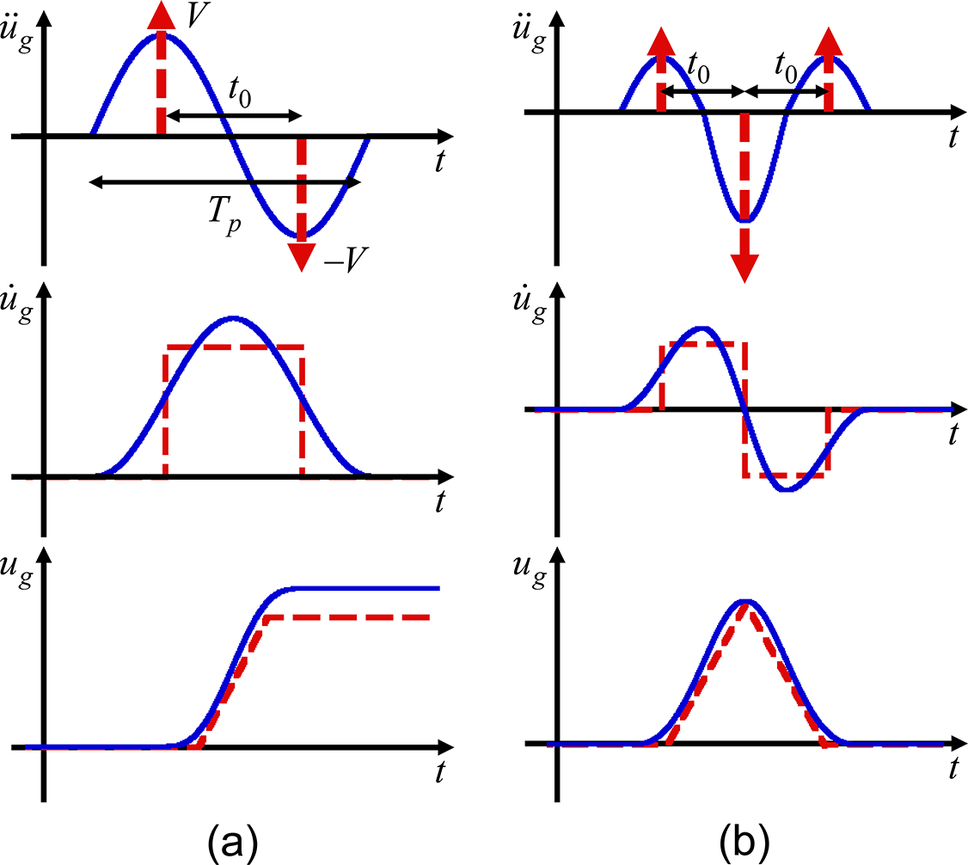
Figure 0.2 Impulse modeling of near-fault ground motion: (a) one-cycle sinusoidal wave and double impulse, (b) 1.5-cycle sinusoidal wave and triple impulse (Kojima and Takewaki 2015a).
In this monograph, the critical excitation problems for elastic-plastic structures under double and triple impulses are explained with the interval of impulses as a variable parameter (Kojima and Takewaki 2015a, b). Furthermore, the critical excitation problems for elastic-plastic structures under multiple impulses as a representative of long-period and long-duration ground motions are tackled with the interval of impulses as a variable parameter (Kojima and Takewaki 2015c, Kojima and Takewaki 2017). This approach can overcome the difficulty, called the nonlinear resonance, encountered first around 1960 in the field of nonlinear vibration, and the critical excitation problems for elastic-plastic structures are tackled in a more direct way than the conventional methods including laborious computation (see ). It can be said that the approach explained newly in this monograph opened the door for an innovative field of nonlinear dynamics.
Table 0.1 Conventional method and proposed method.
Conventional method
(1960s Caughey, Iwan) | Proposed method
(2015 Kojima and Takewaki) |
|---|
| Steady-state | Transient and steady-state |
| Difficulty in elastic-perfectly plastic model | Possible even for elastic-perfectly plastic (any model) |
| Inevitable repetition (equivalent parameters/resonant frequency) | No repetition required |
| < Proposed method enables> |
| Closed-form critical response of elastic-plastic structure |
| Derive resonant frequency (impulse interval) without repetition |
| Closed-form noncritical response of elastic-plastic structure based on closed-form critical response |
In principle, the method explained in this monograph is based on the energy balance law, which is taught as part of a high school physics course. Therefore, undergraduate students can read and understand this work. The authors hope that this monograph is also useful for graduate students for research and structural designers/engineers for practice.
Izuru Takewaki
Kotaro Kojima
Kyoto, 2020
References
- K. Kojima and I. Takewaki ( 2015 a). Critical earthquake response of elastic-plastic structures under near-fault ground motions (Part 1: Fling-step input) , Frontiers in Built Environment (Specialty Section: Earthquake Engineering), Volume , Article 12.
- K. Kojima and I. Takewaki ( 2015 b). Critical earthquake response of elastic-plastic structures under near-fault ground motions (Part 2: Forward-directivity input) , Frontiers in Built Environment (Specialty Section: Earthquake Engineering), Volume , Article 13.
- K. Kojima and I. Takewaki ( 2015 c). Critical input and response of elastic-plastic structures under long-duration earthquake ground motions , Frontiers in Built Environment (Specialty Section: Earthquake Engineering), Volume , Article 15.
Next page

